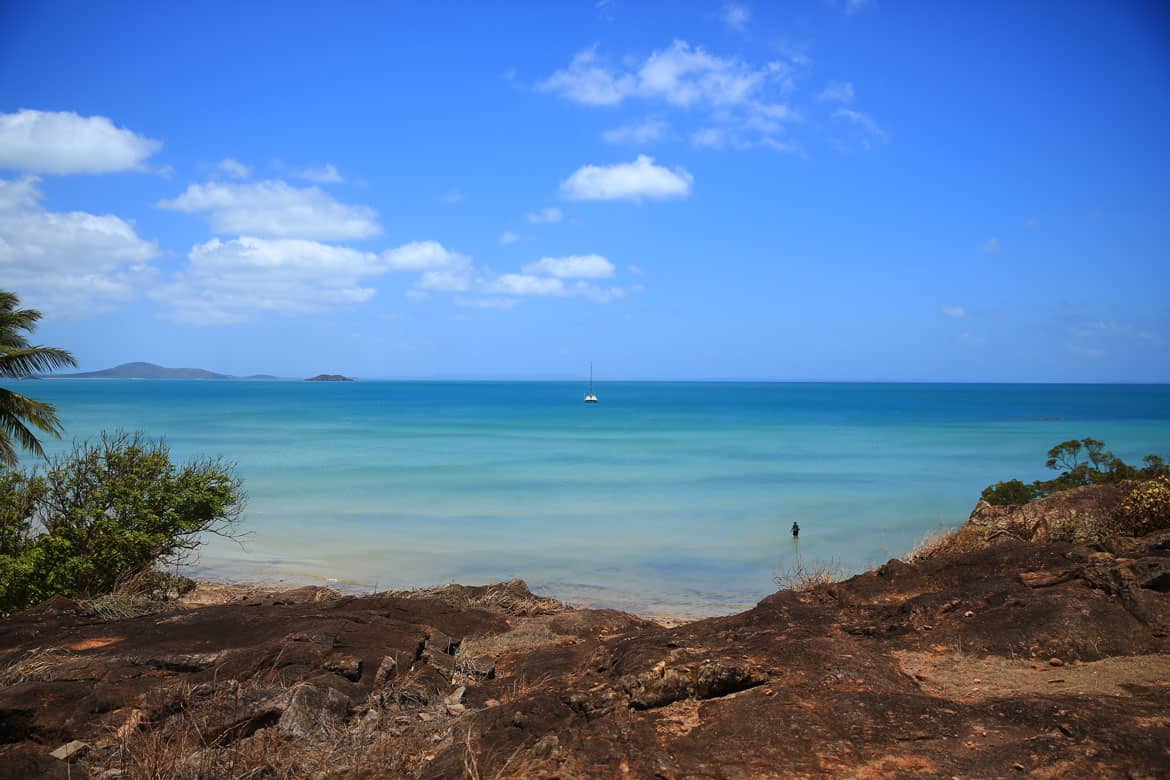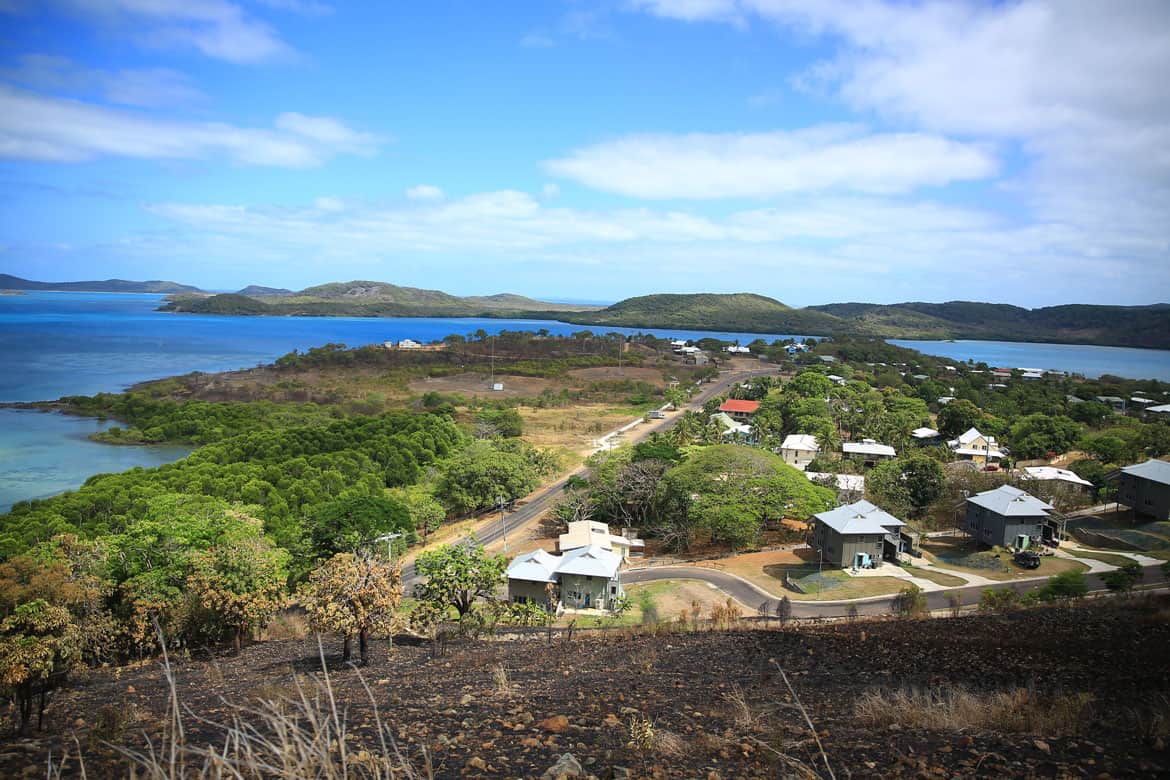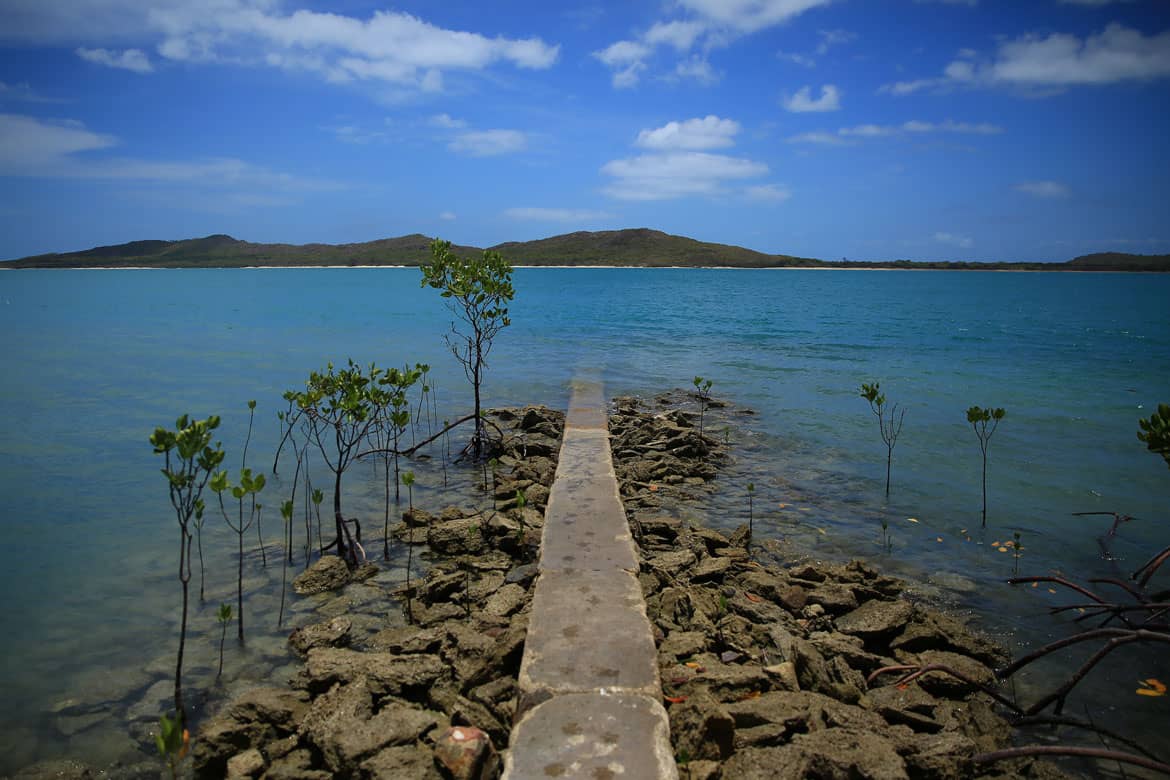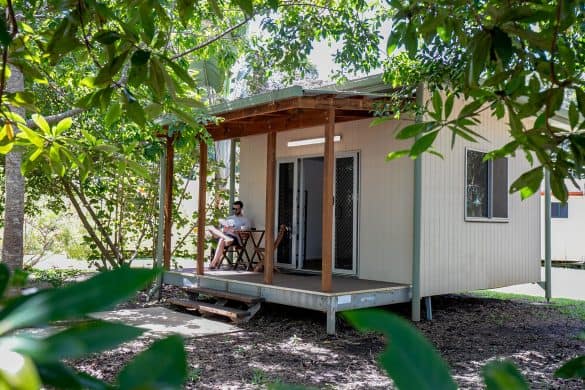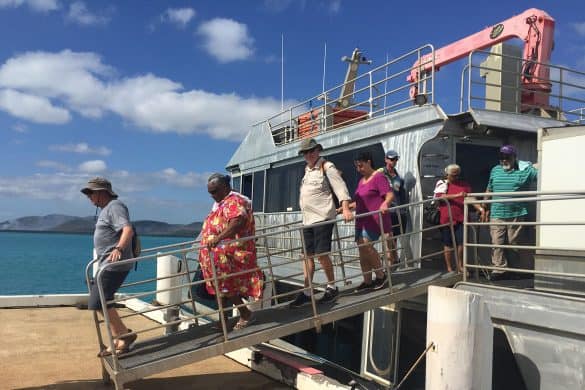The world’s first climate change refugees came from the Torres Strait Islands, and have much to teach the world today about the healing of country.
Australia’s northernmost border doesn’t end at the tip of Cape York. It extends far into the mighty, milky swirl of the Arafura Sea, terminating just four kilometres shy of Papua New Guinea’s southern coast on the island of Saibai. In between lie the Torres Straight Islands, a scattered archipelago encompassing the islands that once formed a land bridge connecting Australia to its nearest neighbour; this is the home of Australia’s ‘other’ Indigenous people, the Torres Strait Islanders.
And it’s from these people we can learn profound lessons about the importance of caring for country. For the people of Saibai are thought to have been the world’s first climate refugees, forced from their home in the 1940s when a tidal surge inundated the low-lying island with saltwater, severely constraining agricultural activities and limiting supplies of freshwater. The men of the island had perceived a solution to the crisis while working on patrols of the strategically important strait during World War II; it was at this time they’d been stationed on the ‘big island’ to the south: the Australian mainland.
“After World War II they went back to Saibai, and after being in a place like this and going back there, they can see, ‘Oh there’s a lot of water here, a lot of fresh water’,” says Jo-Anne Adidi, whose maternal grandparents were among the first settlers from Saibai on the Australian mainland.
The tides of change
And so the islanders packed up their lives a few years after the end of WWII in 1945 and sailed in two old pearling luggers to the west coast of Cape York.
‘‘They asked the Aboriginal people, ‘Where can you give us land? And they said, ‘You’ve got a creek here, you have another creek there and you have another creek here’. They showed them, ‘This is where you can build your place’.”
The people of Saibai cleared the scrub by hand and built the town of Bamaga, which today is the gateway to Cape York and the Torres Strait Islands. Run by the Indigenous-owned social enterprise Bamaga Enterprise Ltd (BEL), it’s one of two towns on the peninsula settled by Saibai islanders; the second is nearby Seisia, from which the ferry departs for the islands. Together with Aboriginal settlements Umajico, Injinoo and New Mapoon, they comprise a rich and complex region shaped by merging tradition and settlement history. The grafting of Torres Strait and Guinean culture onto traditional Aboriginal land has birthed a new history, and preserved age-old connections with the part of Australia that runs all the way to PNG.

A graphic on Horn Island (Ngurapai) illustrates the proximity of Australia to PNG. Photo: Catherine Marshall
Learning to live together
‘‘Even though we’re at the top of the mainland of Australia… you have the Aboriginal people and the Torres Strait people and the New Guinea people, and these are quite different people, even though they’re so close,’’ Adidi says.
‘‘Because of trade there’s always been some understanding, [and] the people exist in unity here… I get it a lot that people say to me, ‘This country is very different, people are very friendly and they’re not aggro or anything like that’. The two cultures living together and learning off one another and marrying together – a lot of people have intermarried – they’ve learned to live alongside one another.’’
As an islander living on Aboriginal land, Adidi is determined to preserve Torres Strait and Saibailgaw culture through Naygayiw Gigi Dance Troupe, of which she is a member. This flagship group just one of many community initiatives supported by BEL in an effort to improve tourism infrastructure in the region and educate visitors about the Torres Strait Islander culture, of which so many Australians are ignorant. As a result of BEL’s work, Bamaga has become accessible to more than just those intrepid souls who undertake the arduous journey by road from Cairns, a 1000 kilometre route filled with gulches, river crossings and corrugations; the town can be reached instead on a short flight. Visitors are catered for at the Indigenous-owned Cape York Peninsula Lodge, where car-hire and tours of the mainland and islands can also be booked.
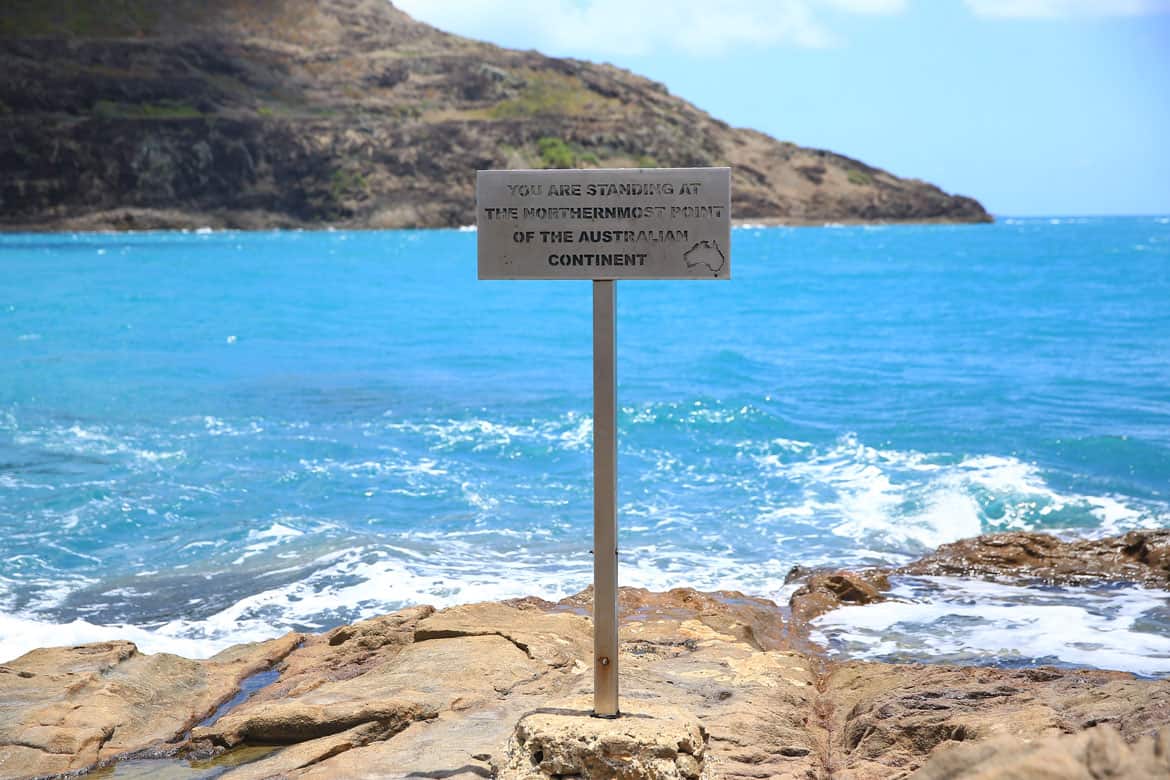
The Tip: the northernmost point on the Australian mainland. Photo: Catherine Marshall.
And though The Tip has been the drawcard for so many Australians determined to reach Australia’s endpoint, it’s really the islands beyond it – 274 of them all up – that tell the full story. They are repositories of a fascinating seafaring culture which differs slightly depending which of the 18 inhabited islands you are visiting, of a people who belong in some way to the two landmasses between which they dwell. And as Australia’s furthest-flung island of Saibai still attests today, they hold the warnings of a world riven by climate change, and embody the urgent call to heal country. TTW
Feature image: Justin Meneguzzi for Bamaga Enterprises Ltd. Catherine Marshall was a guest of Bamaga Enterprises Ltd, Peddells Thursday Island Tours and Rex Airlines. Rex Airlines flies to Bamaga, while Qantas flies to Horn Island, which is accessible to the mainland by ferry. Cape York Peninsula Lodge offers vehicle hire and can arrange activities in the area, see cypl.com.au. Peddells Ferry provides transfers from the mainland to Torres Strait Islands, and tours of Thursday Island and Horn Island. Torres Strait Heritage can customise tour packages on Horn Island, contact Vanessa Seekee at intheirsteps@bigpond.com or 0427 903 333.


